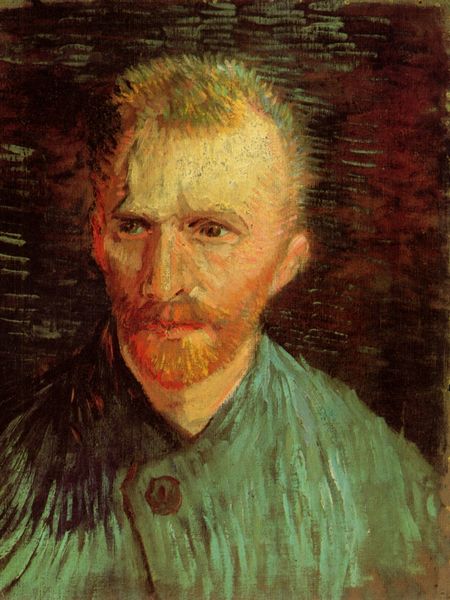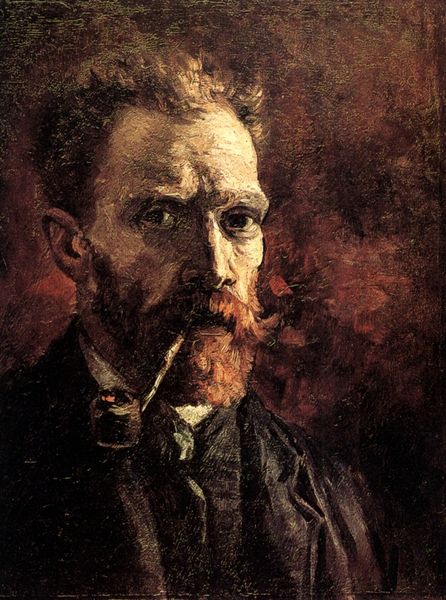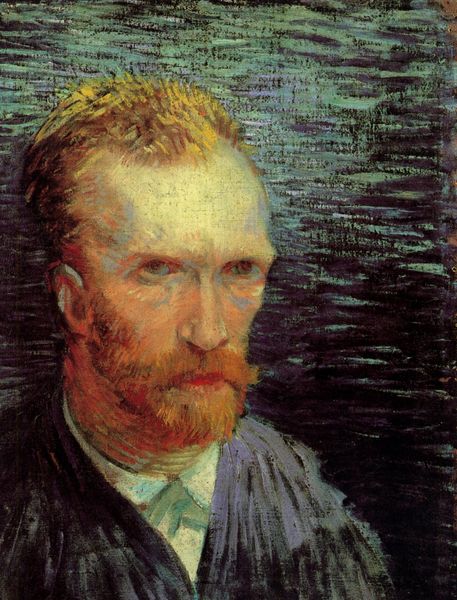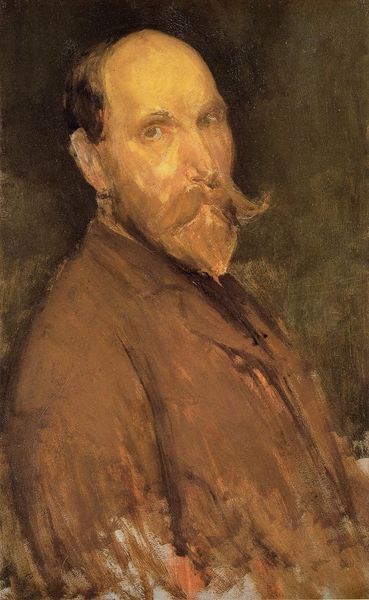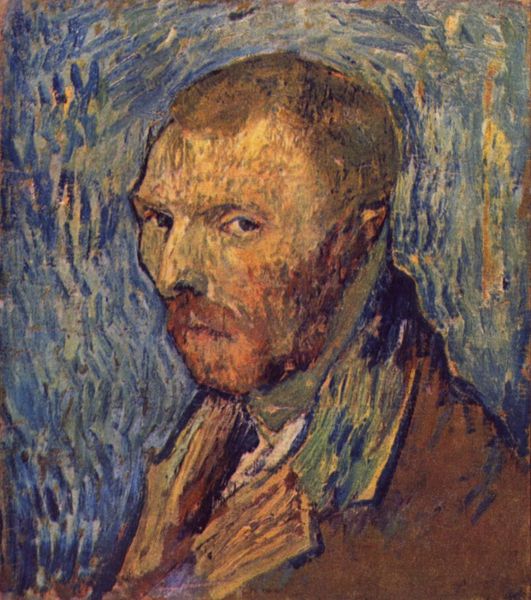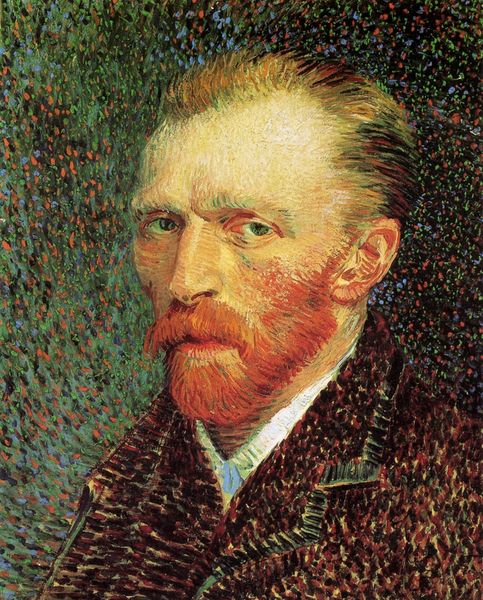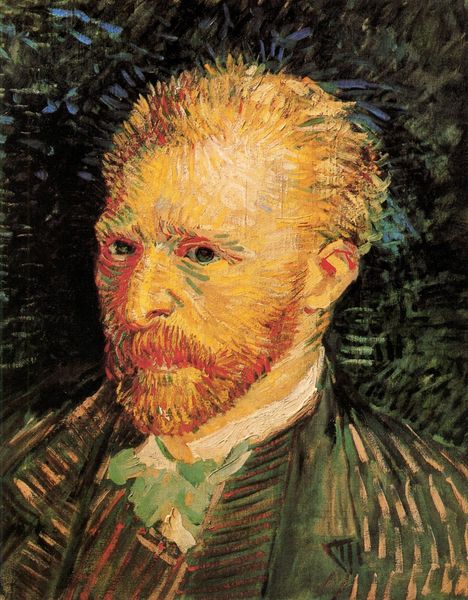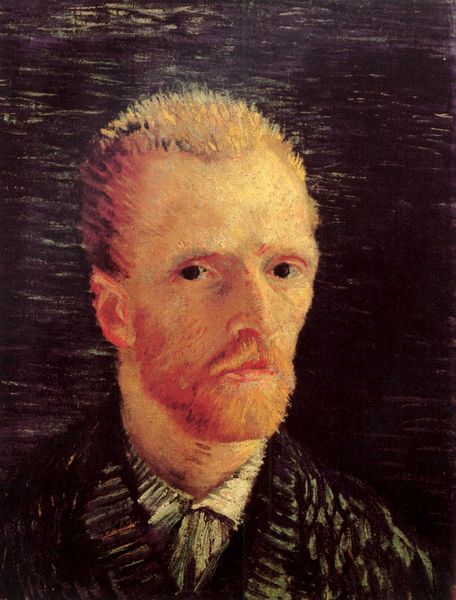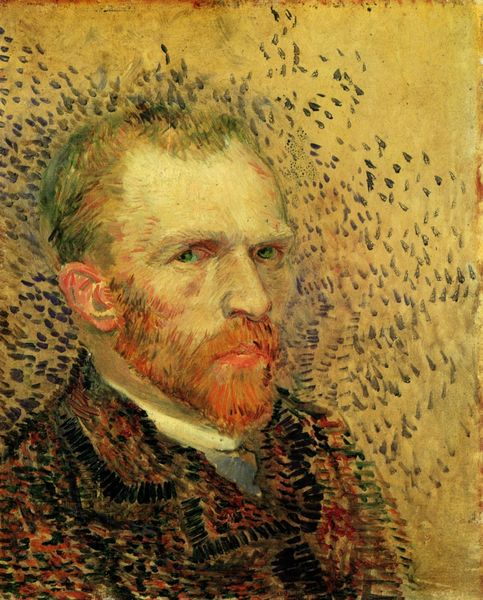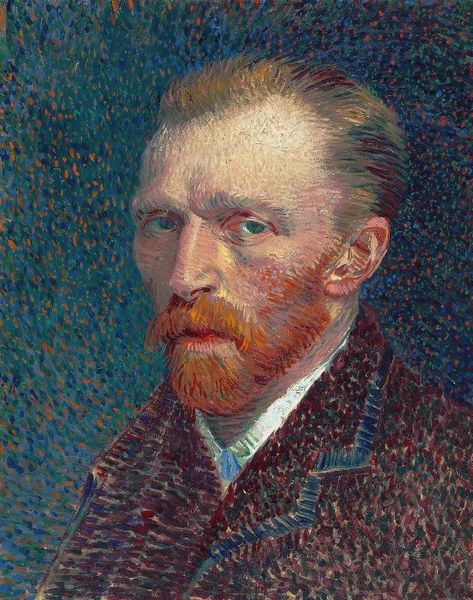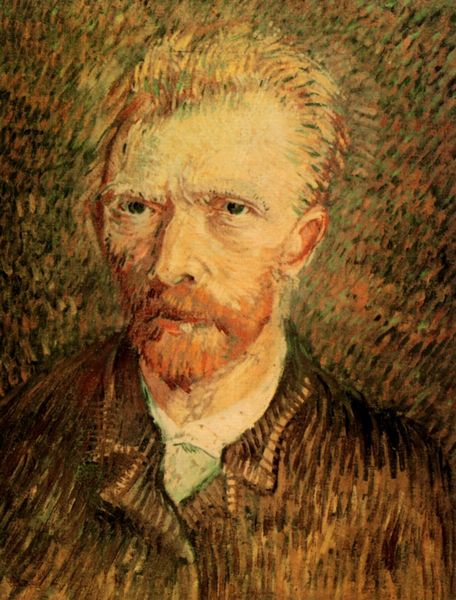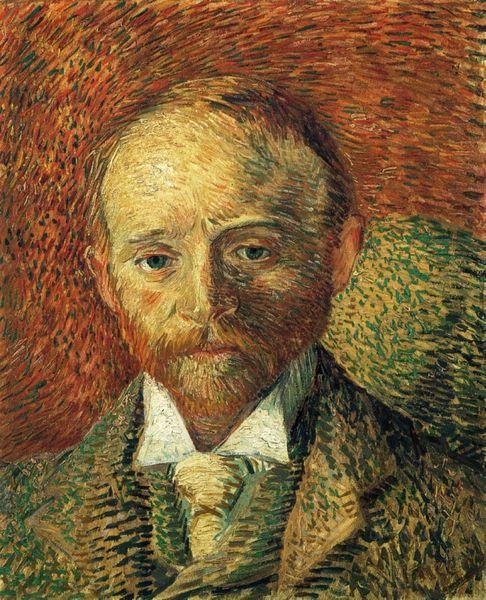
oil-paint, impasto
#
portrait
#
self-portrait
#
oil-paint
#
oil painting
#
impasto
#
famous-people
#
male-portraits
#
post-impressionism
#
portrait art
Copyright: Public domain
Editor: Here we have Van Gogh's "Self-Portrait with Pipe and Glass" from 1887, done in oil on canvas. I'm immediately struck by the roughness of the brushwork. How does that materiality shape your understanding of the piece? Curator: The impasto technique, evident in the thick layering of paint, serves to animate the surface. Note how the brushstrokes do not merely depict form but create a tangible, textured plane. It deviates from illusionistic representation, foregrounding the act of painting itself. We should consider what effect that has. Editor: So the texture is less about mimicking reality and more about drawing attention to the paint as...paint? It seems so different from more traditional portraits. Curator: Precisely. Examine how the composition is structured by contrasting complementary colors. The juxtaposition of reds and greens establishes a visual tension. Further, observe how the subject’s gaze avoids direct eye contact. How does this influence your apprehension of the artist’s psychological state? Editor: The averted gaze and the swirling, almost chaotic brushstrokes do convey a sense of unease. Is there also some meaning in what appear to be props, such as the pipe and glass? Curator: It is important to recognize their presence. Their forms and placement within the composition contributes to a symbolic arrangement of the self. Can we decipher his intent merely from those two pieces? Perhaps. Perhaps not. Ultimately, the pipe and glass become pictorial elements integral to the formal structure. Editor: I see. By focusing on the formal aspects – the texture, color, composition – we can begin to understand the work beyond just a surface-level representation of the artist. Thank you! Curator: Indeed. Such engagement is, invariably, enriching.
Comments
No comments
Be the first to comment and join the conversation on the ultimate creative platform.
